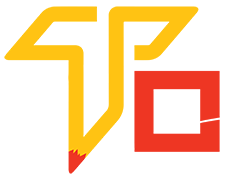2D Animation
What is 2d animation ?
2D animation is a form of animation that creates the illusion of motion in a two-dimensional space. It involves creating a series of images, also known as frames, and displaying them in rapid succession to create the illusion of movement.
2D animation can be created using a variety of techniques, such as traditional hand-drawn animation, digital animation software, or a combination of both. The process typically involves creating a storyboard, designing characters and backgrounds, creating keyframes, and then animating the frames to create a cohesive animation.
2D animation can be used in a variety of ways, such as creating animated films, television shows, advertisements, explainer videos, and educational content. It is often used to create engaging and entertaining content that captures the attention of viewers and conveys a message or story in a visually appealing way.
Some of the benefits of 2D animation include its versatility, affordability, and ability to create unique and stylized visual content. It can also be used to create complex and sophisticated animations, such as character movements, facial expressions, and lip-syncing.
2D animation can be used in a variety of ways to create engaging and entertaining visual content
Here are some common applications of 2D animation:
1. Animated films and TV shows: 2D animation has been used for decades to create some of the most beloved animated films and TV shows, such as Disney’s classic films like “Snow White and the Seven Dwarfs” and popular TV shows like “The Simpsons” and “South Park.”
3. Explainer videos: 2D animation is often used in explainer videos to visually demonstrate complex concepts or processes in a simple and easy-to-understand way.
5. Marketing: 2D animation can be used in marketing materials such as animated logos, infographics, banners and social media posts to create an eye-catching visuals and branding for a company.
2. Advertisements and commercials: 2D animation can be used in advertisements and commercials to create eye-catching and memorable visual content that helps to promote products and services.
4. Educational content: 2D animation can be used in educational content to make learning more engaging and interactive, such as creating interactive diagrams, characters or educational games.
6. E-learning: 2D animation can be used in e-learning courses to explain complex topics, such as science, math, or history. Animated characters and diagrams can also make e-learning more engaging and effective.
IN 2D ANIMATION THERE ARE 2 TYPES:-
1ST IS – WHITEBOARD ANIMATION
2ND IS – MOTION GRAPHICS
What is whiteboard animation?
Whiteboard Animation has become very popular, mainly due to the tremendous success of the RSA Animate series that we developed to help the RSA tell some of the world’s most important stories. But what is Whiteboard Animation and why should you use it to supercharge your storytelling?
Whiteboard animation is a particular type of explainer video and pretty much does what it says on the tin – images, diagrams and words are drawn onto a crisp, white background using a sharp, black marker pen. The blacks are accented with a red marker or other punchy colours that stand out against the black and white. The images illustrate a spoken voice-over script that can be heard above the animation. The drawings bring concepts to life in a highly visual way using instantly recognisable symbols and images to add to and reinforce the central messages of the script.
Whiteboard video animations aim to utilise several parts of our intelligences at once – auditory, visual, and to some degree kinesthetic, to hopefully cater to many different types of learners
Benefits of Whiteboards animation-
a.Encourage Student Engagement
b.Makes the Learning Process More Enjoyable
c. Internet Connectivity
d. Accommodates Different Learning Styles
e. Makes Lesson Revision More Convenient
Charges
In whiteboard animation
1.Without voice over (only background music ) (1min)- 1000rs
2.With voice over (optional background music) (1min)- 1000rs
content of video (1min)- 2000rs
( FOR EXAMPLE- (1min) vedio 1000rs + content (1min) 2000rs= 3000rs )
What is motion graphics?
Motion graphics are a way to communicate with the viewer, and add depth to the story. Together with music and effective copy, they can give us a message. We use them to create ads, title sequences for movies, explainer videos, and to share information.
From Static to Moving Designs
Motion Graphics means Graphics in Movement. It’s the most straightforward definition you can get. Many times, Motion Graphics is also called Motion Design, making the relationship between movement and design elements easier to understand. Motion Graphics is about bringing the design knowledge to new mediums by adding the elements of time and space to it — i.e. creating movement.
But bringing design elements to life isn’t a simple task. Unlike other animation fields, you don’t have a pre-defined or “natural” way of animating things. For example, in a traditional cel animation (like Disney movies), you can use endless references from nature to animate a human figure or an animal. But in Motion Design, there’s no natural reference to how shapes, typography, and grids move. For this reason, motion designers study all types of movements, acceleration, and speeds. By putting all those variables together they can bring life to design elements in a way that’s more humanized, capable of connecting with viewers.
Benefits of Motion Graphics-
a. It is cost and time effective.
b. It raises brand recognition.
c. It makes brand content shareable across social networks.
d. It drives people to comment and discuss content.
e. It allows an app or a web-based platform to come up high in Google search.
Charges
In Motion Graphics
1.Without voice over (only background music ) (1min)- 1000rs
2.With voice over (optional background music) (1min)- 1300rs
content of video (1min)- 2500rs
( FOR EXAMPLE- (1min) vedio 1000rs + content (1min) 2500rs= 3500rs )
Types Of Motion Graphics You Should Know
1. Explainer videos-
Explainer videos are short and digestible pieces of video content that tell viewers how your product works.
2. Instructional videos
Very similar to your explainer video, an instructional video rather walks viewers through how to USE your product.
For example, you might be selling your own brand of seasoning. You would use an instructional video to tell your audience how to incorporate it into a recipe.
3. User interface (UI) animation
If you’ve created an app or digital platform, it’s a smart idea to show it in action using motion graphics.
This way, what your audience sees will be what they get. In other words, if they start using your platform, they’ll already be familiar with it.
4. Logos
What makes your brand even more memorable than its logo? A moving one!
With your logo, you have the chance to play with how it’s composed to create an eye-catching animation. Remember, all types of motion graphics are just static images that are manipulated to create movement.
5. Icons
This is the same concept as your logo – look at your icons and see how you could manipulate them into motion.
6. Titles
Titles don’t have as much ‘oomph’ when they’re stock-still on the screen. Make them move will draw attention to them, highlighting their importance and improving your communication.
7. Infographics
Let’s face it, even when an infographic is showing some really interesting stats, sometimes we’re tempted to skim over it.
8. Presentations
You could be the best public speaker in a million miles. However, if you’re presenting something on a screen and it’s completely flat, this can really hurt your presentation’s success.
9. Broadcast graphics
The lesser-talked about of the types of motion graphics is broadcast graphics.
10. GIFs
You use them on social media and send them to your friends and colleagues: GIFs is hugely popular among the types of motion graphics. While a lot of GIFs are live-action video that has been turned INTO a GIF, others are made specifically to be GIFs.
GIF motion graphics are really handy for, and effective on, social media. What’s more, they don’t take long to make
PHP is often a good choice for clients for several reasons:
Cost-effective: PHP is an open-source language, which means it is free to use and distribute. This can be a cost-effective option for clients who are on a tight budget
Versatility: PHP is a versatile language that can be used for a wide range of web development projects, from simple websites to complex web applications. This makes it a flexible option for clients who have different needs and requirements.
Large ecosystem of tools and frameworks: PHP has a large ecosystem of tools and frameworks that can be used to build web applications more efficiently. This can help clients save time and money during the development process.
Overall, PHP can be a good choice for clients who value cost-effectiveness, versatility, compatibility, and a large community of developers and tools. However, as with any technology, it’s important to carefully consider the specific needs and requirements of the project before choosing a programming language or framework.
Large talent pool: Because PHP has been around for many years and is widely used, there are many developers who are skilled in the language. This can make it easier for clients to find qualified developers to work on their projects.
Compatibility: PHP is compatible with many different operating systems and web servers, which means it can be used on a variety of platforms. This can make it easier for clients to deploy their applications and reach a wider audience.

